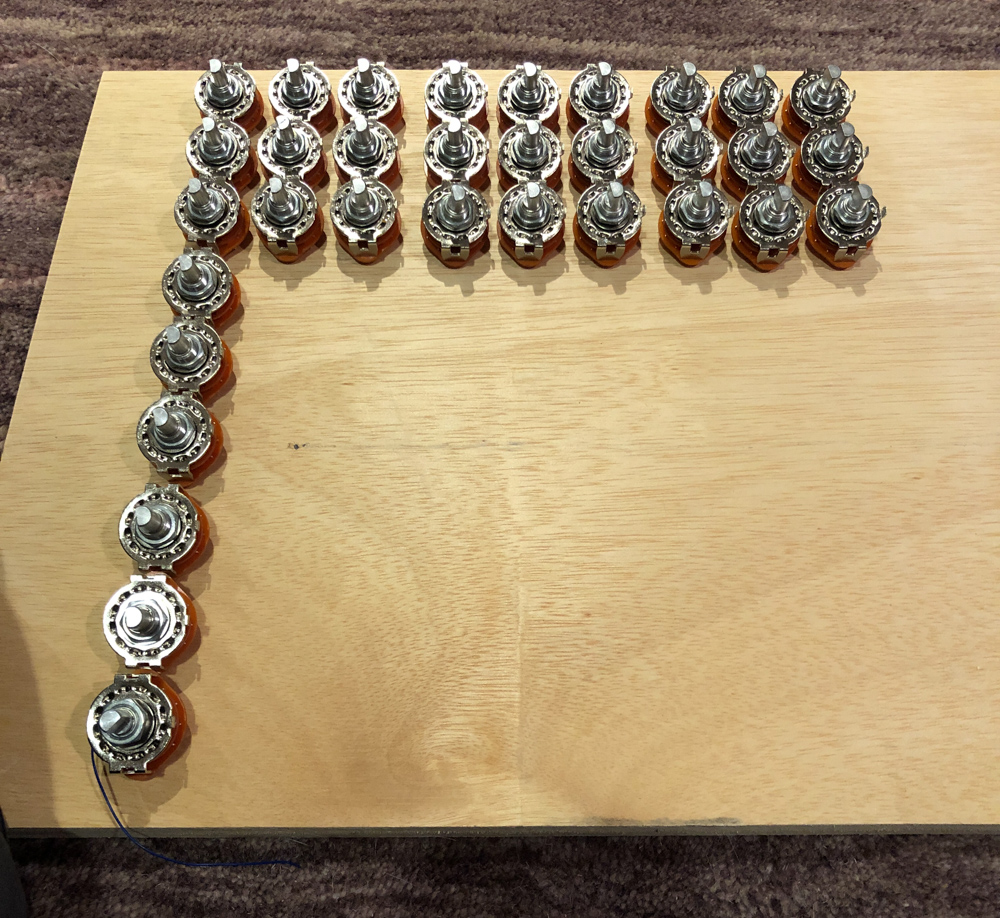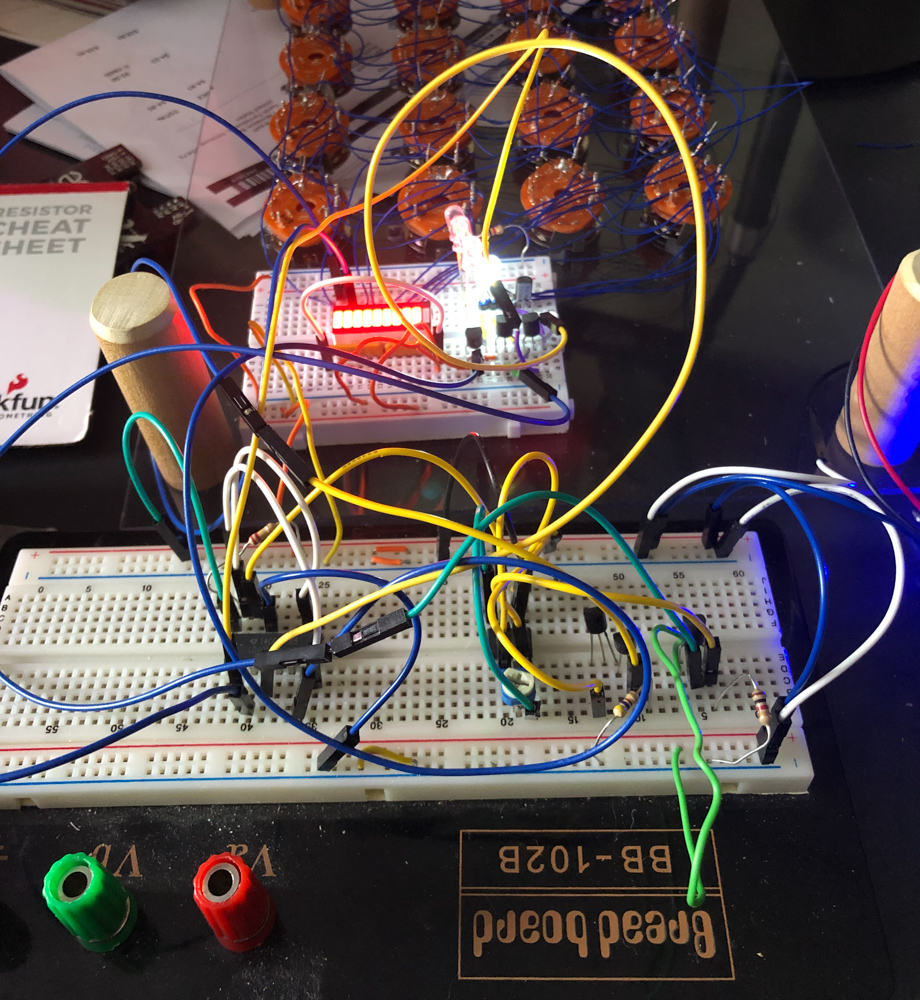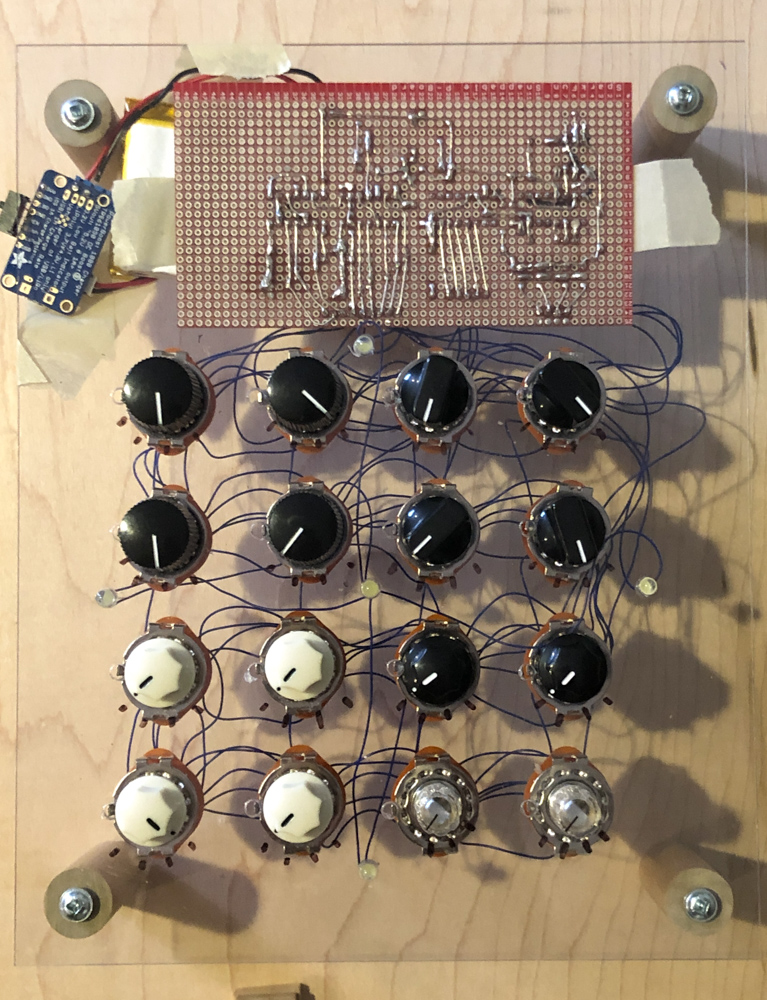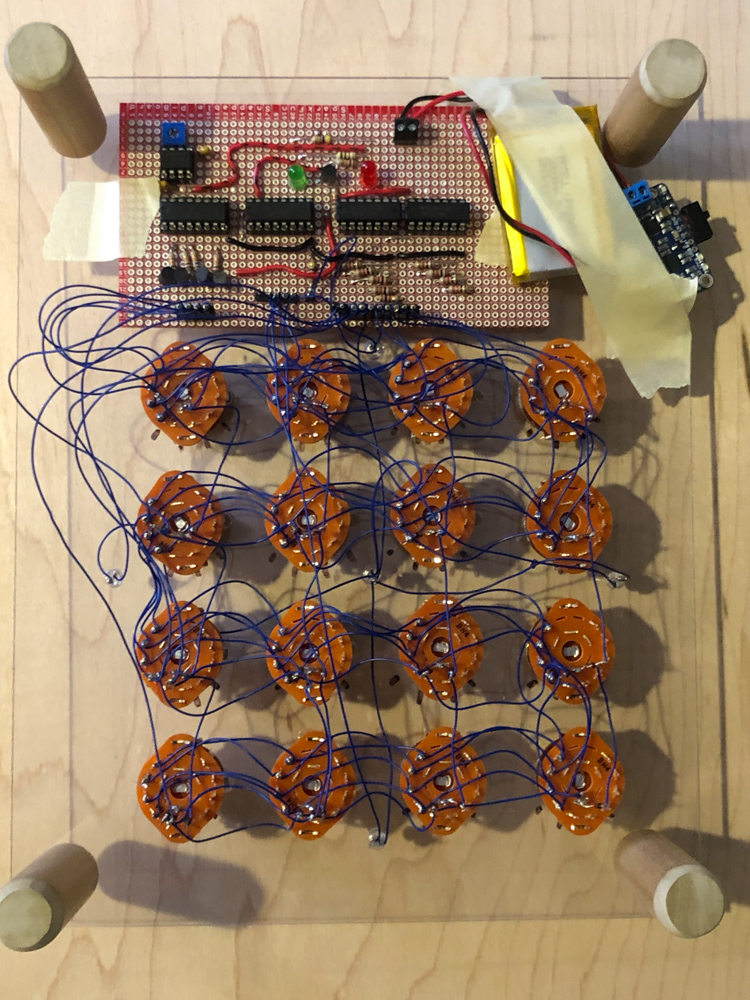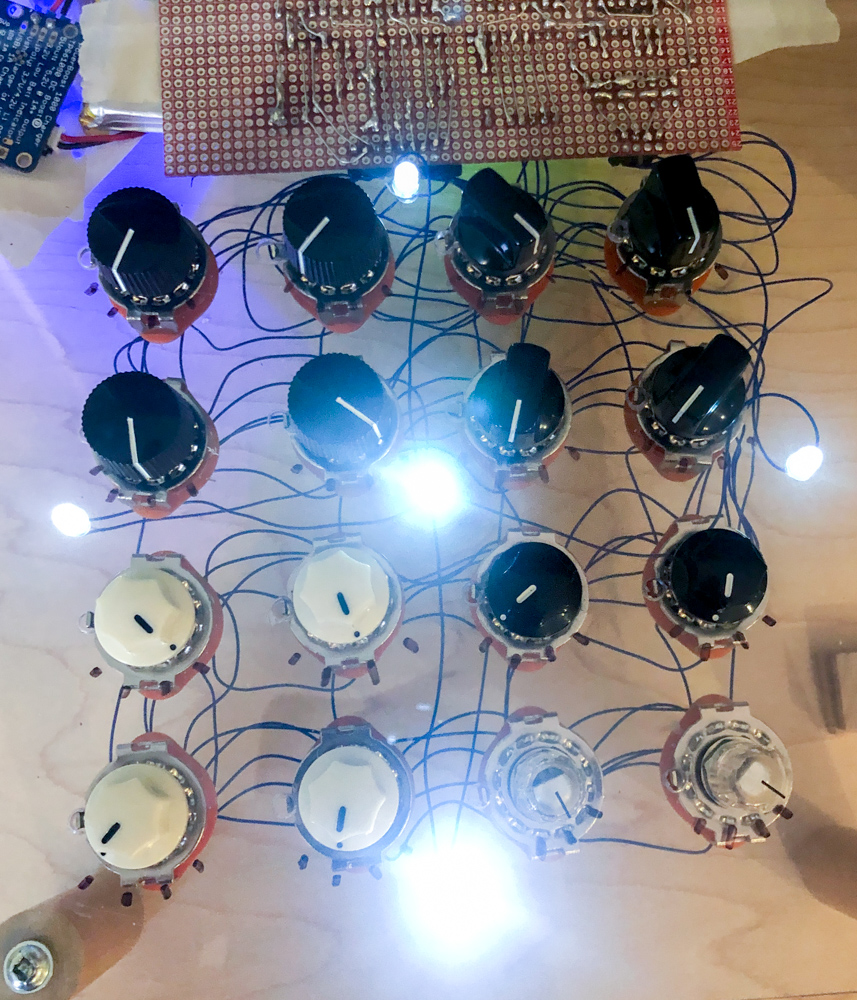Analog Sudoku Computer

While nowhere near remotely complex or challenging, I had the idea to see if I could design a circuit that could determine if a sudoku puzzle had been solved (with no microcontroller). I spent many weeks cycling between designing the circuit in my head, drawing out diagrams, learning about different components, and thinking of better ways to do things. I got to the point where I needed to test if what I had on paper actually would work. So I started prototyping...
Instead of a traditional 9x9 sudoku grid, the prototype is a scaled down 4x4 grid. Each row consists of 4 knobs, which can input between 1 and 4. The 4x4 grid is made up of 4 2x2 cells. To win, the player must have no repeating numbers in each row, column, and 2x2 square. This scaled down version will function the same as the full size version, and allowed me to test my circuit designs work. Now that the scaled down prototype is complete and working, I'm planning on building a full sized 9x9 version. I'll be posting circuit diagrams once I'm further along with the build.
